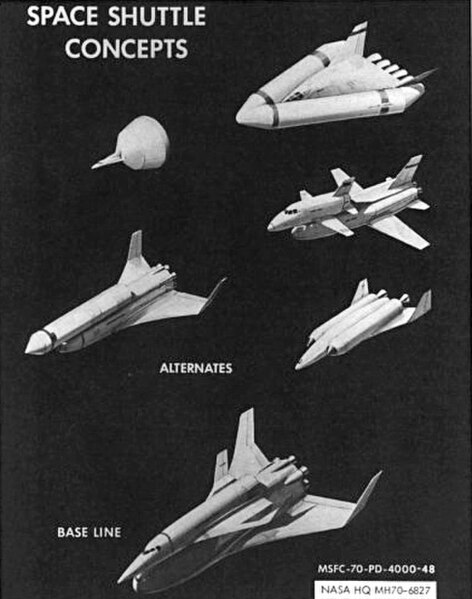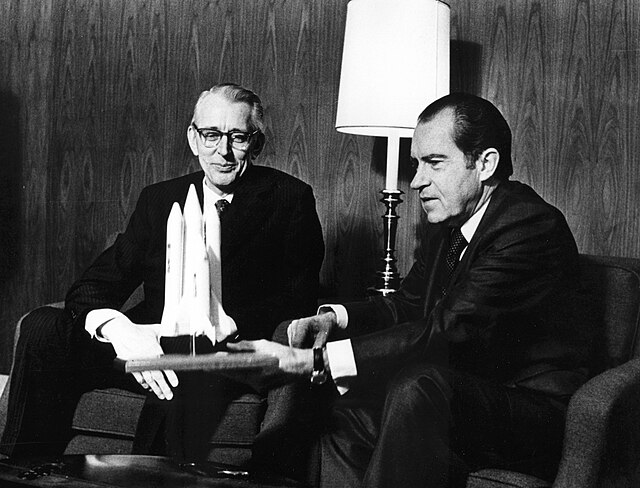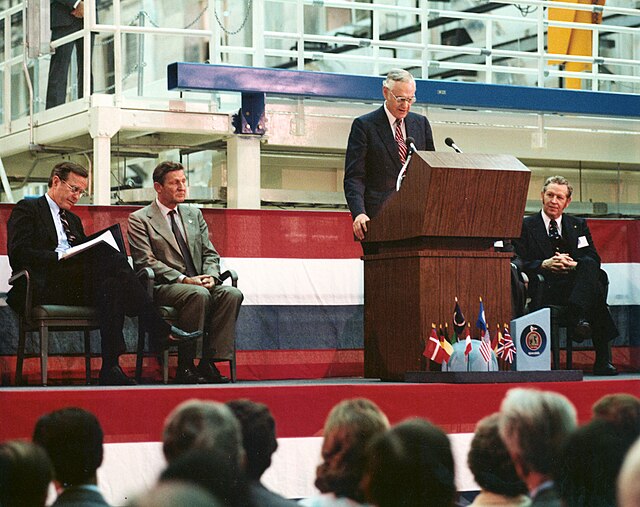STS-51-L was the disastrous 25th mission of NASA's Space Shuttle program and the final flight of Space Shuttle Challenger.
Challenger launches at the start of STS-51-L. 73 seconds later, the shuttle's external tank would combust, causing the breakup of the shuttle and the deaths of all 7 crew on board.
Back row: Ellison S. Onizuka, S. Christa McAuliffe, Gregory B. Jarvis, Judith A. Resnik Front row: Michael J. Smith, Francis R. "Dick" Scobee, Ronald E. McNairSpace Shuttle program← STS-61-C (24)STS-26 → STS-61-E →
Challenger after the explosion 73 seconds after launch
The Space Shuttle program was the fourth human spaceflight program carried out by the U.S. National Aeronautics and Space Administration (NASA), which accomplished routine transportation for Earth-to-orbit crew and cargo from 1981 to 2011. Its official name, Space Transportation System (STS), was taken from a 1969 plan for a system of reusable spacecraft of which it was the only item funded for development. It flew 135 missions and carried 355 astronauts from 16 countries, many on multiple trips.
Early U.S. space shuttle concepts
President Richard Nixon (right) with NASA Administrator James Fletcher in January 1972, three months before Congress approved funding for the Shuttle program
Shuttle approach and landing test crews, 1976
NASA Administrator address the crowd at the Spacelab arrival ceremony in February 1982. On the podium with him is then-Vice President George Bush, the director general of European Space Agency (ESA), Eric Quistgaard, and director of Kennedy Space Center Richard G. Smith







